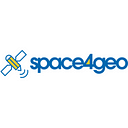Let’s get started! — How to view the released Version 4.0 of the EO4GEO BoK?
The EO4GEO BoK is now publicly available. In EO4GEO, experts work together in a web environment to be able to enter their contributions in a central view, in order to see each other’s work and align it amongst each other. This ongoing work can now be publicly seen in our working applications on the Web.
Author: Rob Lemmens, University of Twente, Faculty of Geo-Information Science and Earth Observation (ITC), Enschede, The Netherlands
The first public release of the EO4GEO BoK is now available!
The EO4GEO BoK is constructed in the Living Textbook tool based on the principles of ontology, with well-defined concepts as building blocks and the relationships between them. It provides experts with a way to model, view and share their knowledge domain in a structural way. In the case of EO4GEO, it represents the domain of Earth Observation (EO) and Geographic Information (GI). In this way, we use the Living Textbook tool to create this knowledge domain collaboratively as it is open to all experts who want to contribute to its content. The content in the Living Textbook is now being released on a regular basis and exports are made available as official releases. The content of the Living Textbook is ported to the other tools within the EO4GEO BoK platform. This content, with the addition of permalinks for all concepts, is made available as the official release, used in all tools and referable by outside applications, and can be found at http://bok.eo4geo.eu/, where it can be viewed and searched.
The EO4GEO BoK as represented in the Living Textbook tool (see figure 1) is available here.
Once you enter the Living Textbook tool with this link, you can start viewing the BoK right away by clicking on the Open map button:
This will show the complete graphical overview of all the concepts in the BoK, each being represented by a circle, and connected by arrows. Concepts with more connections are displayed as larger circles. You can use the common ways to navigate through this concept map by zooming and panning. The software optimizes the positions of all concepts so that they are not too far apart. Therefore the circles tend to move now and then. As a viewer, you can drag concepts to another place and start/stop this dynamic view.
This Body of Knowledge is alive, a group of experts is continuously working on it.
Clicking on a concept shows the explanation of this concept in the window on the left-hand side (see the examples in Figure 2). This text contains a short description, external resources, and who is contributing to this concept. Each concept also comes with a list of skills, which indicate the relevant knowledge and know-how to complete tasks and solve problems in a certain occupational profile. You can drag the windows to a convenient size.
Several search functions allow you to find specific concepts. For example, type ‘sensor’ in the search window in the concept map and you will see a drop-down list with several categories of sensors. An even more powerful search is located in the text window on the left (the magnifier button); this will find any text in the BoK, based on any word that you enter.
Explore!
A more elaborating manual is available here. Learn more about how the Living Textbook is used by experts in this 6-minute video.
